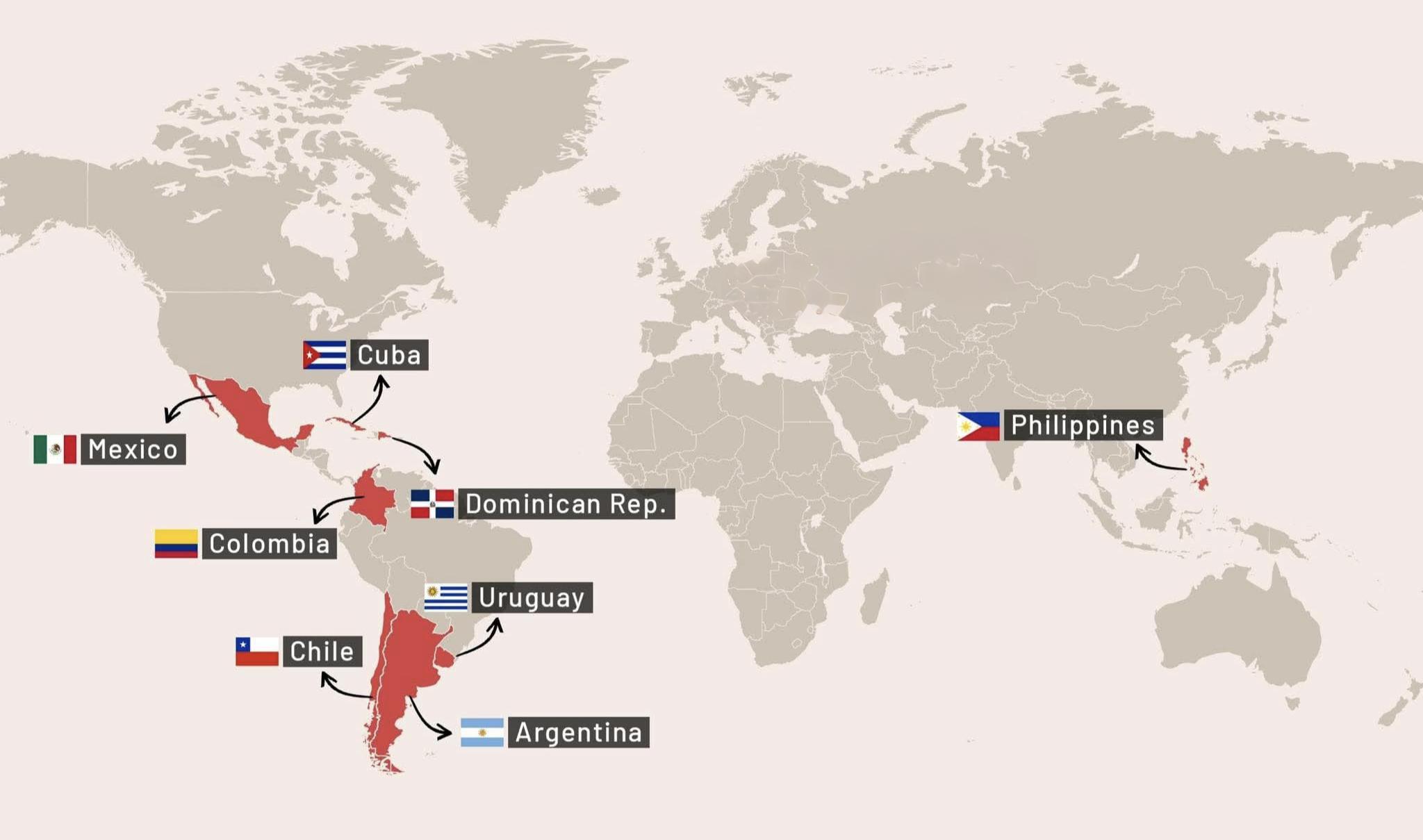Countries Using Peso as Currency Map


David Chen
Data Visualization Specialist
David Chen is an expert in transforming complex geographic datasets into compelling visual narratives. He combines his background in computer science ...
Geographic Analysis
What This Map Shows
This map displays the countries that utilize or refer to their currency as "Peso." The Peso has a rich history and is currently the official currency in several nations, primarily in Latin America. Understanding the Peso's geographical distribution can provide insights into the economic landscapes of these countries and their historical ties.
Deep Dive into the Peso
The term "Peso" originates from the Spanish word for "weight," and it has been used in various forms since the late 16th century. The Peso is primarily associated with the currencies of Latin American countries, but its influence also extends to parts of the Philippines. Currently, the Peso is the official currency in countries like Mexico, Argentina, Chile, Colombia, the Philippines, and Uruguay.
Interestingly, the Mexican Peso is one of the most traded currencies in the world, partly due to Mexico's robust trade relationships with the United States and other nations. The Mexican Peso (MXN) is subdivided into 100 centavos and has a long-standing history as a stable currency. In fact, it has remained a key player in the emerging markets category.
Argentina's Peso (ARS), on the other hand, has faced significant inflation issues in recent years. The economic challenges have led to several changes in its value, making it a subject of interest for economists and investors alike. Understanding how the Argentine Peso interacts with global markets can offer insights into broader economic trends.
Meanwhile, the Chilean Peso (CLP) and the Colombian Peso (COP) are used in their respective countries and reflect the economic stability and growth of these nations. The Chilean economy, characterized by its strong export sector, particularly in copper and fruit, supports the Peso's value. In Colombia, the Peso has shown resilience despite external shocks, thanks in part to the diversification of its economy and strong agricultural exports.
The Philippine Peso (PHP) rounds out the list of currencies referred to as Peso. The currency has evolved significantly since the Spanish colonial period and is now a reflection of the Philippines’ dynamic economy, which is growing with a focus on technology and service sectors.
In summary, the Peso is not just a currency; it embodies the economic history and current realities of the countries that use it. From its origins in colonial Spain to its modern-day usage, the Peso has evolved, showcasing the economic shifts and challenges faced by these nations.
Regional Analysis
When looking at the map, we can see that the Peso is mainly concentrated in Latin America, with several countries across the continent using it as their official currency. For instance, Mexico, which is the largest economy in Central America, uses the Peso and has a trade relationship that significantly influences its currency's strength. The proximity to the U.S. market plays a pivotal role in the Peso's stability and attractiveness to investors.
In contrast, countries like Argentina face economic instability, which affects the Peso's value. The Argentine Peso has seen drastic devaluations, particularly in the last decade, highlighting the risks associated with investing in currencies from countries with volatile economic conditions.
Chile and Colombia present a more stable economic outlook compared to Argentina. The Chilean Peso, for example, benefits from a strong mining sector, while the Colombian Peso is supported by diverse exports, mitigating some of the risks associated with currency valuation.
Outside of Latin America, the Philippine Peso stands out as a currency with ties to both Asia and the Americas. The Philippines has seen significant remittance inflows from overseas workers, which supports the Peso's value and offers a different dynamic compared to its Latin American counterparts.
Significance and Impact
Understanding which countries use the Peso as their currency is vital for several reasons. From an economic perspective, these currencies reflect not only the historical ties to Spain but also the current economic health of these nations. For investors, recognizing the stability of these currencies can guide decisions in foreign exchange markets.
Moreover, as global economies evolve, the performance of the Peso can indicate broader economic trends in Latin America and Asia. With ongoing globalization, shifts in trade policies, and economic reforms, the Peso's role might change, impacting everything from inflation rates to investment patterns.
In summary, the map of countries using the Peso highlights a fascinating interplay between history, culture, and economics. As these nations navigate their unique challenges and opportunities, the Peso will continue to serve as a barometer of their economic health and resilience, making it a topic worth following closely.
Visualization Details
- Published
- October 8, 2025
- Views
- 42
Comments
Loading comments...